Peruvian Guinea Pig
- March 22, 2024
- 0 comment
The Peruvian Guinea Pig is a captivating small rodent cherished for its distinctive long-haired coat and amiable demeanor. Originating from the Andes region of South America, these charming creatures have become popular pets worldwide. Their luxurious coat, which can grow up to 20 inches in length, is one of their most recognizable features, adding to their allure. Beyond their striking appearance, Peruvian guinea pigs are known for their sociable nature and intelligence.
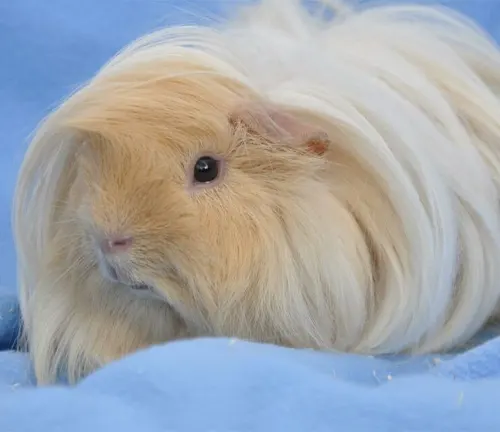
They thrive on interaction with their human companions, forming strong bonds and delighting families with their affectionate behavior. Proper care and attention are essential for their well-being, including providing a spacious cage, a balanced diet, and regular grooming to maintain their long fur. With a lifespan of 5 to 7 years, Peruvian guinea pigs offer years of companionship and joy to those who welcome them into their homes.
Peruvian Guinea Pig Characteristics
| Specification | Description |
|---|---|
| Size | Small, compact body structure |
| Coat Length | Long-haired coat, can grow up to 20 inches in length |
| Lifespan | 5 to 7 years with proper care and nutrition |
| Origin | Andes region of South America |
| Personality | Sociable, affectionate, and intelligent |
| Housing | Spacious cage with bedding, hiding spots, and toys for enrichment |
| Diet | Balanced diet including fresh hay, vegetables, and pellets |
| Grooming Needs | Regular brushing to prevent matting and tangling of fur, occasional baths required |
| Health Considerations | Prone to dental problems, respiratory infections, and skin conditions if not provided with proper care |
| Training and Socialization | Intelligent and trainable, enjoy interacting with humans, positive reinforcement techniques recommended |
| Breeding | Gestation period of around 60 to 70 days, typically give birth to litters of 1 to 4 pups |
| Suitability as Pets | Ideal for families and individuals seeking a small, low-maintenance pet |
A Complete Guide to this Unique Pet
Peruvian guinea pigs, often referred to as cavies, are a unique breed known for their long, flowing coats and charming personalities. Originating from the Andes region of South America, these small rodents have captured the hearts of many as beloved pets.
Physical Characteristics
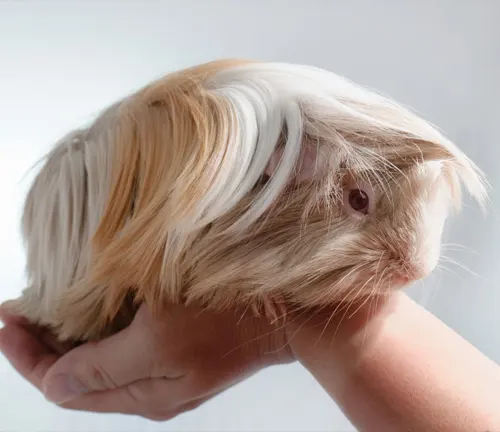
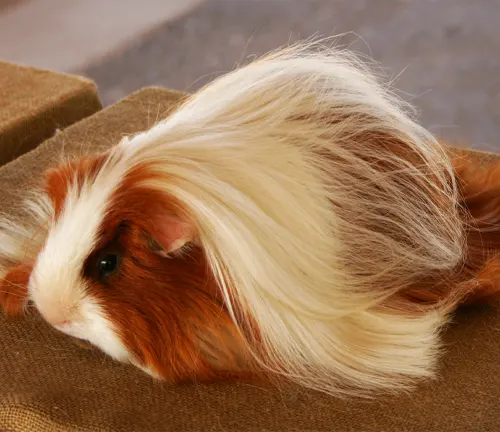
Peruvian guinea pigs are distinguished by their unique and notable physical characteristics. Their long-haired coat, which can reach up to 20 inches in length, is a standout feature, giving them an elegant and regal appearance. This soft and dense fur not only adds to their charm but also provides them with protection and insulation. Their compact and sturdy body structure, along with small rounded ears and bright expressive eyes, further contribute to their appeal as beloved pets. Overall, the physical traits of Peruvian guinea pigs make them both visually striking and delightful companions, enhancing their allure as cherished pets.
Personality and Behavior
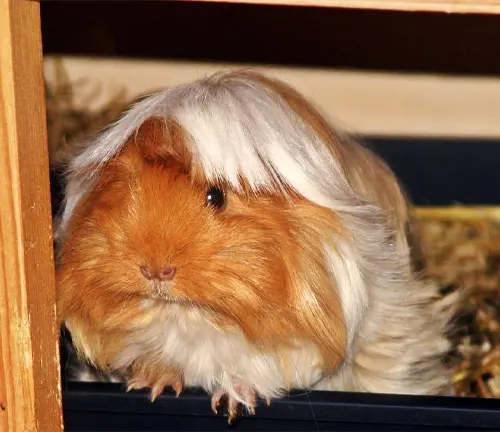
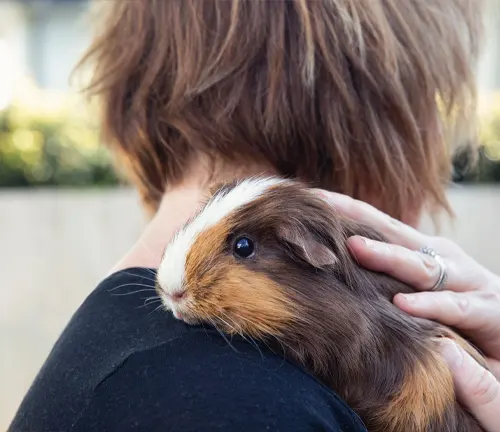
Peruvian guinea pigs are beloved for their charming personality and delightful behavior, making them cherished pets for many. These small rodents are sociable and affectionate, forming strong bonds with their human companions. They enjoy interacting with people, expressing their gratitude through gentle nuzzles and happy squeaks. Intelligent and curious, they eagerly explore their surroundings and thrive on attention and enrichment activities. Despite their small stature, they exude confidence and friendliness, making them wonderful additions to any household. With their playful antics and friendly demeanor, Peruvian guinea pigs bring joy and companionship to those lucky enough to have them as part of their lives.
Housing and Care Requirements
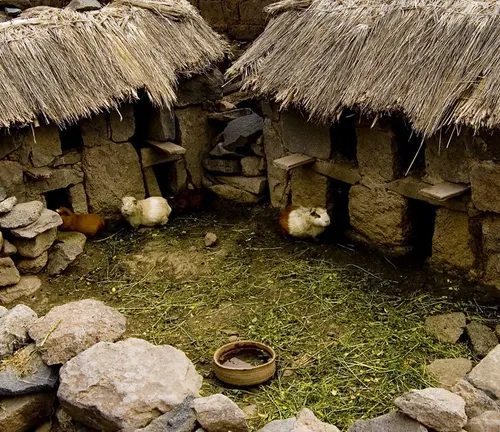

Housing and care requirements are essential aspects of providing a healthy and fulfilling life for Peruvian guinea pigs. These small rodents require a suitable living environment that meets their physical and psychological needs.
First and foremost, Peruvian guinea pigs need a spacious cage that allows them room to move around and explore. The cage should be large enough to accommodate their size and provide separate areas for sleeping, eating, and exercising. A cage with solid flooring is preferred to prevent injury to their delicate feet.
Bedding is crucial for keeping the cage clean and comfortable. Options such as paper-based bedding, aspen shavings, or fleece liners are suitable choices. It’s essential to avoid cedar or pine bedding, as the aromatic oils can be harmful to guinea pigs’ respiratory systems.
In addition to a suitable cage and bedding, Peruvian guinea pigs require a balanced diet to maintain their health and well-being. Their diet should consist mainly of high-quality hay, such as timothy or orchard grass, supplemented with fresh vegetables, pellets specifically formulated for guinea pigs, and occasional treats like fruits or herbs. Clean, fresh water should always be available in a drip bottle or heavy bowl.
Environmental enrichment is also important for Peruvian guinea pigs’ mental stimulation and physical exercise. Providing toys, tunnels, and hiding spots in the cage encourages natural behaviors like foraging and exploration. Regular playtime outside of the cage in a safe, supervised area allows guinea pigs to stretch their legs and socialize with their human caretakers.
Maintaining proper hygiene is crucial for preventing health issues in Peruvian guinea pigs. The cage should be spot-cleaned daily to remove soiled bedding, and a thorough cleaning should be done weekly using a mild, pet-safe cleaner. Additionally, their nails should be trimmed regularly, and their long coats require grooming to prevent matting and tangling.
Health Considerations
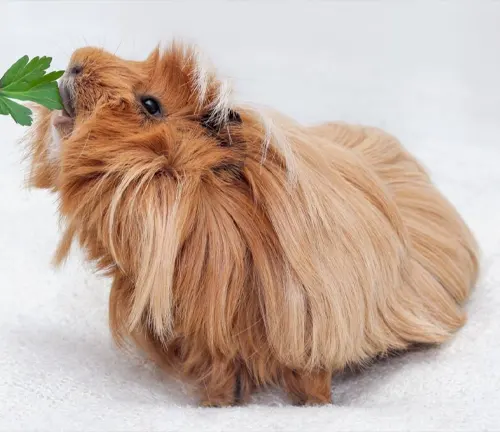
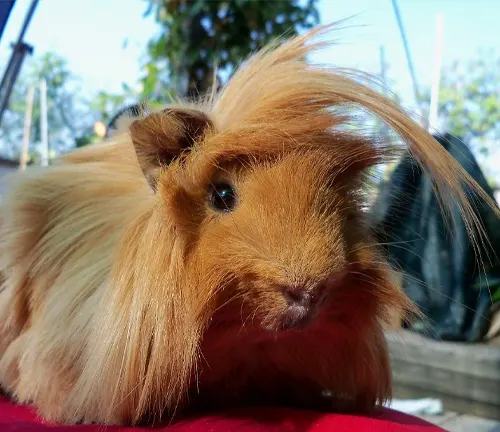
Taking care of the health of Peruvian guinea pigs is crucial to ensuring they live long and happy lives. Like all pets, they are susceptible to certain health issues that require attention and care. Common health concerns for Peruvian guinea pigs include dental problems, respiratory infections, skin conditions, and obesity. Regular veterinary check-ups are essential for early detection and treatment of any health issues that may arise. Providing a balanced diet, maintaining proper hygiene, and providing a clean living environment can help prevent many health problems in Peruvian guinea pigs.
Grooming Needs
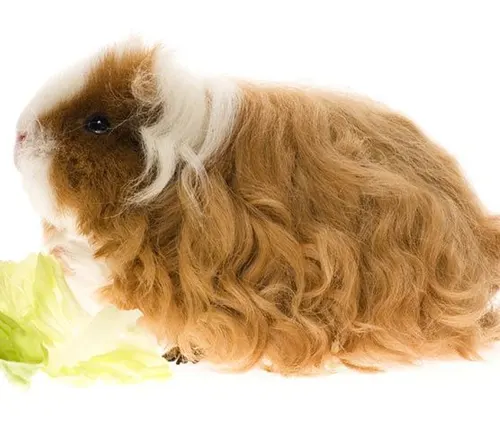
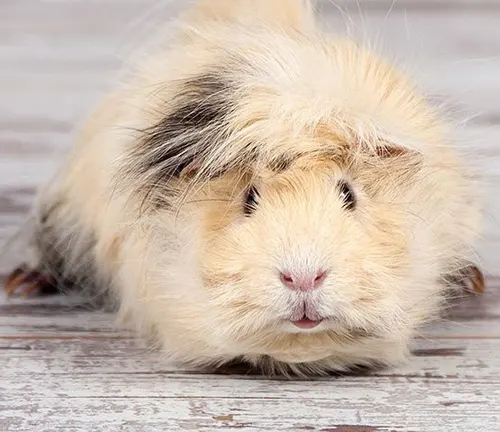
Due to their long-haired coats, Peruvian guinea pigs have specific grooming needs that require regular attention. Brushing their fur several times a week is necessary to prevent matting and tangling. A gentle brush or comb designed for small animals can be used to remove loose hair and debris from their coat. In addition to brushing, Peruvian guinea pigs may require occasional baths to keep their fur clean and healthy. When bathing them, it’s essential to use a mild shampoo specifically formulated for small animals and to ensure they are thoroughly dried afterward to prevent chilling.
Training and Socialization
Peruvian guinea pigs are intelligent animals that can be trained and socialized with proper care and patience. They respond well to positive reinforcement training techniques, such as offering treats and praise for desired behaviors. Socialization with humans and other guinea pigs is essential for their well-being, as it helps prevent boredom and encourages mental stimulation. Spending quality time interacting with them, handling them gently, and providing opportunities for play and exploration can help build trust and strengthen the bond between owners and their guinea pigs.
Breeding and Reproduction

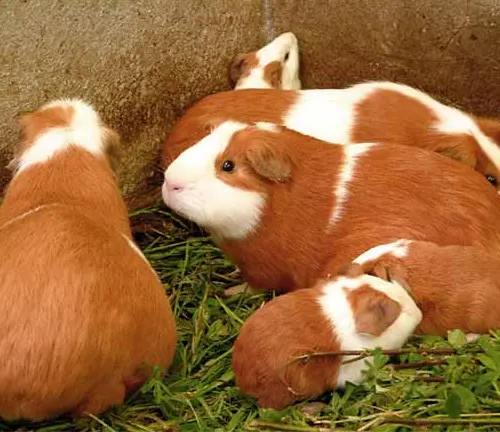
Breeding Peruvian guinea pigs should be approached with caution and responsibility. Before considering breeding, it’s essential to research and understand the genetics and care requirements involved. Female guinea pigs, known as sows, have a gestation period of around 60 to 70 days and typically give birth to litters of 1 to 4 pups. Proper care and nutrition are crucial during pregnancy and lactation to ensure the health of both the mother and her offspring. Responsible breeding practices help prevent overpopulation and ensure that guinea pigs are placed in loving homes where they will receive proper care and attention.
Peruvian Guinea Pig as Pets
Peruvian guinea pigs make wonderful pets for families and individuals alike. Their gentle nature, charming personality, and unique appearance make them delightful companions. With proper care and attention, they can thrive in a home environment, providing years of joy and companionship to their owners. However, it’s essential to consider the commitment involved in caring for a Peruvian guinea pig, including providing a suitable living environment, proper nutrition, and regular veterinary care. By understanding and meeting their needs, Peruvian guinea pigs can make rewarding and loving pets for those willing to welcome them into their homes.
Different Breed
Abyssinian Guinea Pig
Known for its rosettes or whorls of hair that grow in multiple directions, giving it a unique and ruffled appearance.
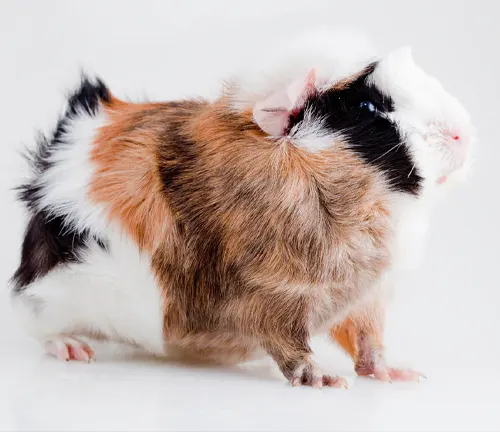
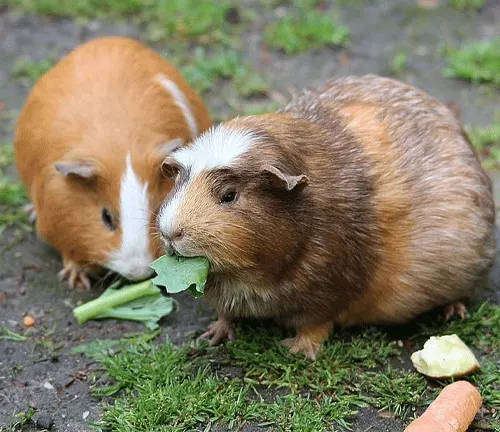
American Guinea Pig
The most common breed, characterized by its smooth coat and rounded body shape.
Silkie Guinea Pig
Also known as Sheltie, this breed has a long, silky coat that flows backward from its head to its rear.
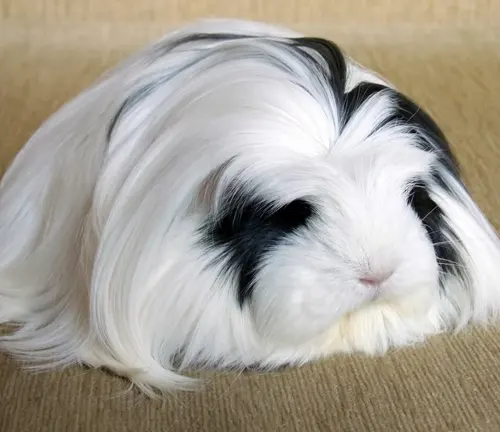
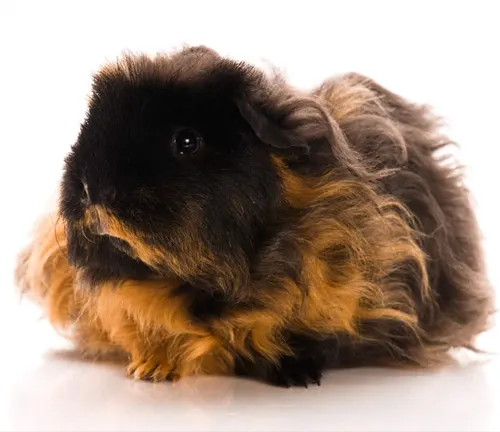
Texel Guinea Pig
Recognized for its curly, long coat, which resembles that of a sheep.
Crested Guinea Pig
Identified by the single rosette or crest of fur on its forehead.
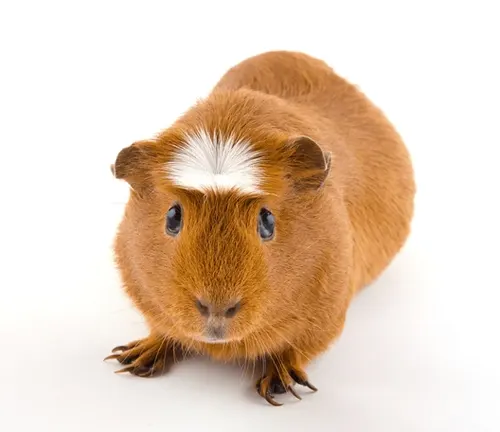
Frequently Asked Question (FAQs)
- What is the temperament of Peruvian guinea pigs?
Peruvian guinea pigs are known for their gentle and sociable nature, making them excellent companions for families and individuals alike. - Do Peruvian guinea pigs require special housing?
While they don’t need specialized housing, Peruvian guinea pigs do require a spacious cage with proper ventilation, bedding, and enrichment items to keep them healthy and happy. - How can I tell if my Peruvian guinea pig is healthy?
Signs of a healthy Peruvian guinea pig include bright eyes, a shiny coat, regular eating and drinking habits, and being active and curious. - What should I feed my Peruvian guinea pig?
A balanced diet for Peruvian guinea pigs should consist of fresh hay, vegetables, pellets formulated for guinea pigs, and access to clean water at all times. - How can I socialize my Peruvian guinea pig?
Socialization with humans and other guinea pigs is essential for Peruvian guinea pigs. Spending time with them, offering treats, and providing opportunities for play and exploration can help them feel comfortable and confident. - Do Peruvian guinea pigs need exercise?
Yes, Peruvian guinea pigs benefit from regular exercise outside of their cage. Providing them with a safe and supervised area to explore can help keep them physically and mentally stimulated. - Are Peruvian guinea pigs noisy pets?
Generally, Peruvian guinea pigs are quiet animals, although they may vocalize with squeaks, chirps, or purrs to communicate with their owners or express excitement. - Can Peruvian guinea pigs be litter trained?
While it’s possible to litter train Peruvian guinea pigs to some extent, it may not be as effective as with other pets like cats. However, providing a designated area for urination and feces can help maintain cleanliness in their cage. - Are Peruvian guinea pigs suitable for children?
Yes, Peruvian guinea pigs can make wonderful pets for children, especially if they are taught how to handle and care for them gently and responsibly. - Do Peruvian guinea pigs require regular veterinary check-ups?
Yes, regular veterinary check-ups are essential for monitoring the health and well-being of Peruvian guinea pigs and addressing any potential issues early on.


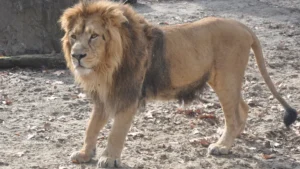




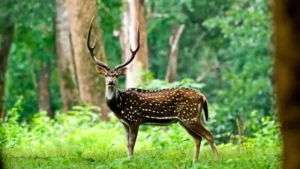


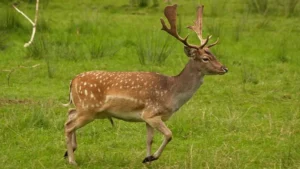

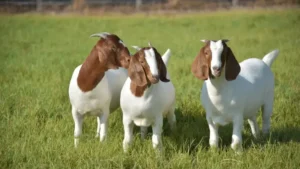

Leave your comment